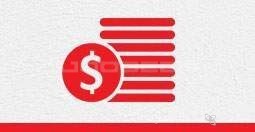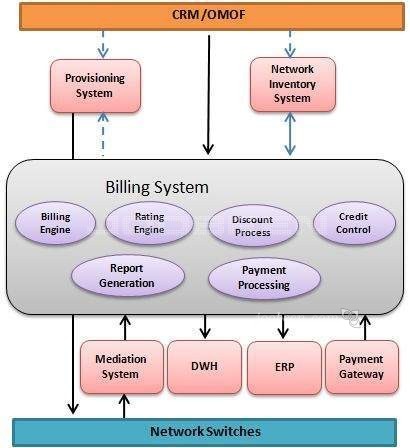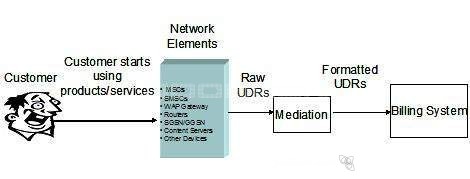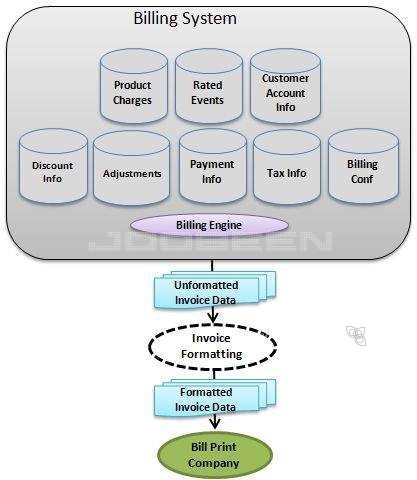Telecom Billing is a process of collecting usage, aggregating it, applying required charges and finally generating invoices for the customers. Telecom Billing process also includes receiving and recording payments from the customers.
Sending voice, data, picture, fax, etc., from one point to another using electronic media is termed as telecommunication and in short ‘telecom‘. Examples include Phone, Radio, Television and Internet. The medium of transmission includes Wire (Copper), Fiber Optics, Ether (wireless), Radio towers, Microwave, Satellite, etc.

Let us also list down a few basic telecom services being provided by various well known telecom operators −
- Voice Call
- Fax Service
- SMS & MMS
- Internet Connection
- Data Download and Upload
- Video Conferencing
- IP based services, i.e., voice over IP or VPN
Billing systems are often viewed as accounts receivable, as the billing system assists in the collection (receipt) of money from customers. Billing systems are also part of accounts payable (for inter-carrier settlements), as customers often use services from other companies such as wireless roaming, long distance, and call completion through other networks.

After a call is made or you can say a usage is generated by the end customer, the mediation system gathers usage data from the network switch and builds a call-detail record (CDR). This CDR must contain ‘A’ party number and ‘B’ party number, the start and the end date & times.
The CDR is then stored until it can be rated. To rate the call, the CDR is examined to see if the call is, for example, an 800 number, a local call that is covered by a local-area calling plan, international call or a toll call. Information such as the time of the call was placed and city code or country codes are used to calculate the rate for the call.
Once each call is rated, this information is stored until the invoice is run, usually once a month. When the invoice is run, other nonusage charges, such as discounts or monthly fees, can be applied to the bill or sometime called invoice.
There could be a rating time discount or billing time discount, different payments done by the customers, different adjustments given, all these information contribute in the final invoice generation.
This information is then converted in a format, which can be printed in a readable form. Finally, the envelope is printed, stuffed with enclosures, and mailed to the end customer.
An event along with all its attributes is called Call Detail Record (CDR). A data collector in the network switch captures the usage in the form of Call Detail Record (CDR)/Usage Detail Record (UDR). These raw CDRs/UDRs are in turn converted by the mediation system into a format understandable by the Billing System.
There could be different network elements controlling the services and producing different types of CDRs; for example, for GSM telephony −
- Voice calls are captured by the MSC (Mobile Switching Centre).
- SMS traffic is captured by the SMSC.
- Data traffic is captured by the GGSN.
- MMS traffic is captured by the MMSC.
- Roaming CDRs are captured by roaming partner’s switching element.
The following diagram shows the Network elements capturing Usage data and sending Raw UDRs to the Mediation System and finally to the Billing System for rating and billing.

As mentioned above, a CDR keeps usage details along with various other useful information. Below are the most important attributes of a CDR −
- Calling Party (A number).
- Called Party (B number).
- Call Start (date and time).
- How long the call was (duration).
- Call Type (Voice, SMS, Data etc).
- A unique sequence number identifying the record.
Additionally, a CDR may also record other information such as −
- The identifier of the telephone exchange.
- The result of the call (whether it was answered, busy, etc.).
- Trunk or route used to connect the call.
- Any fault condition encountered.
- Indicators that note the use of features such as call forwarding, three-way calling, etc.
- Any facilities used during the call, such as call waiting or call diversion.
- Various other attributes depending on requirement.
The accurate recording of all required information in a UDR depends on the logic of the switch vendor plus the switch specific table entries. If either of these cannot record the data accurately, the mediation system will not be able to recognize the completed calls and pass them to the billing system.


